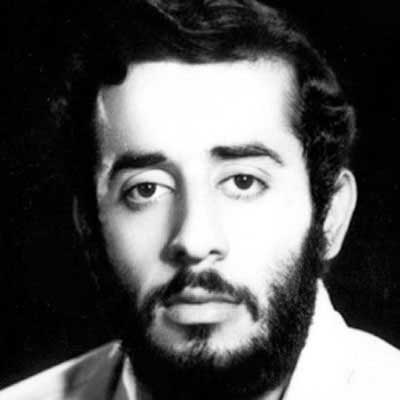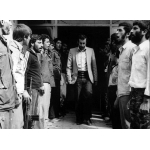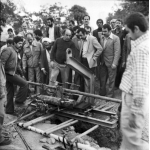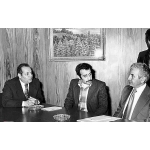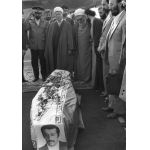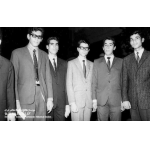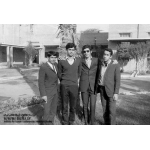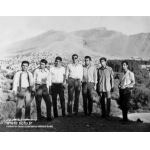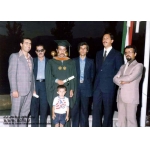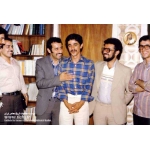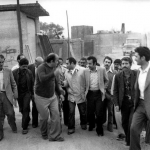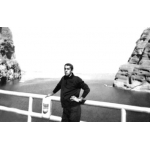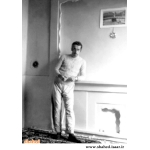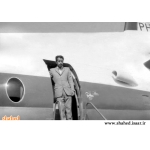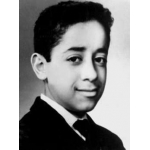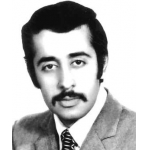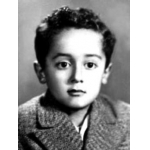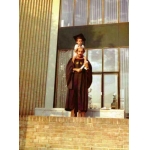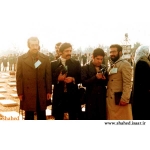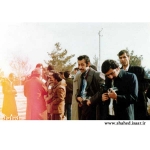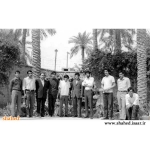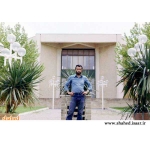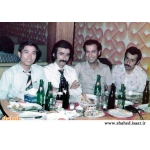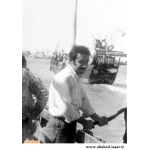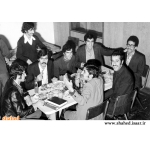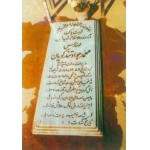Tondguyan, Muhammad Javad
Fatemeh Qorbani
293 بازدید
Muhammad Javad Tondguyan (1950–1991) was an engineer and served as the Petroleum Minister under Prime Minister Muhammad-Ali Rajai from September 2 to November 3, 1980. Iraqi forces captured him in November 1980 during the Iran-Iraq War and was later martyred in captivity.
Tondguyan was born on June 16, 1950, in Khaniabad, southern Tehran. He began his formal education in 1957 and graduated in 1968 with a diploma in mathematics from Jafari Eslami School. In the same year, he began studying oil engineering at the Tehran, Shiraz, and Abadan Institutes of Petroleum.[1] Due to his family's insistence, he chose to study at the University of Tehran, where he graduated in 1972.
During his mandatory military service, Tondguyan served as an officer. However, due to his involvement with the Islamic Association of University Students and his opposition to the Pahlavi regime, his rank was reduced to private, and he was transferred to a logistical unit in Shiraz.[2] In 1973, he married, and the marriage resulted in the birth of four children: Mahdi, Maryam, Hajar, and Hoda. On November 4, 1973, Tondguyan was arrested for his political activities and subjected to torture by the regime’s anti-subversion committee. After seven months of solitary confinement and a year in prison, he was released in 1974.
In 1975, Tondguyan began working at Pars Toshiba (later known as Pars Khazar) in Rasht, where he worked until 1977. He then pursued a master’s degree in management at the Harvard-affiliated School of Management. After graduation, he returned to his position at Pars Toshiba. Following the victory of the Islamic Revolution, the workers at Pars Toshiba requested his appointment as the factory’s director, a position he accepted.[3]
In mid-1979, Ali Akbar Moienfar, then Petroleum Minister in the government of Muhammad-Ali Rajai, asked Tondguyan to work as the deputy director of the Abadan Refinery. He later managed the Southern Oilfields Company from July to October 1980. In early October 1980, Rajai nominated Tondguyan for the position of Petroleum Minister, which was approved by the Iranian Parliament.[4] During his tenure, Tondguyan made three visits to the Abadan Refinery to oversee refining activities and meet the needs of the workers.[5]
On November 3, 1980, Tondguyan, along with a delegation, set out to visit the Abadan Refinery. While traveling on a dirt road near Mahshahr, Abadan, in southern Iran, Iraqi forces intercepted his convoy,[6] capturing Tondguyan, his two deputies, Seyyed Mohsen Yahyavi and Behrooz Boushehri, and two bodyguards.[7] The remaining vehicles in the convoy managed to escape.[8] Although Tondguyan was not initially recognized by the Iraqis, he revealed his identity to save the lives of 100 Iranian military prisoners.[9] Iraqi television broadcast a message proclaiming, “Iran now has neither a Minister of Petroleum nor oil.”[10]
During an OPEC meeting held in Bali, the Iranian government, through the United Nations and the International Red Cross, called for Tondguyan’s release.[11] Hoping that he would be freed, Rajai did not appoint any replacement for the position of Petroleum Minister during his tenure as Prime Minister.[12]
Despite these efforts, on December 9, 1980, Iraqi officials declared that Tondguyan would remain a prisoner of war until the end of the conflict.[13] He sent two letters to Iran in 1981 and 1982, but no further news about him reached his family or the government.[14]
On December 5, 1991, a body was returned by Iraq to Iranian officials, but it turned out that it did not belong to Tondguyan. Eventually, after further efforts by the Iranian government, Tondguyan’s mummified body, showing signs of a skull fracture, was delivered to Iran. On December 20, 1991, a funeral was held for him in Tehran, and he was laid to rest in Behesht Zahra Cemetery near the graves of Rajai and Bahonar.[15]
A statue commemorating Tondguyan stands in front of the Ministry of Petroleum in Tehran,[16] and a memorial has been erected near the village of Sadat, five kilometers southeast of Abadan, where he was captured by Iraqi soldiers.[17]
[1] Kamvar Bakhshayesh, Javad, Jasmine in a Cage, Tehran: Islamic Revolution Documents Center, 2001, p. 7; Encyclopedia of the Islamic Revolution, vol. 1, Tehran: Soure Mehr, 2005, p. 244.
[2] Zendeh Eshgh (Biography of Mohammad Javad Tandgoyan), Tehran: General Directorate of Public Relations, Ministry of Oil, 1999, pp. 23-34; Encyclopedia of the Islamic Revolution, vol. 1, p. 244.
[3] Ibid., p. 87; Ibid., pp. 244 and 245.
[4] Scientific Council, Iranian Governments from Mirza Nasrallah Khan Moshir-al-Dawlah to Mir-Hossein Mousavi, Tehran: Ministry of Culture and Islamic Guidance, 1999, p. 451; Kamvar Bakhshayesh, Javad, Jasmine in a Cage, pp. 61-63.
[5] Shahed Yaran, No. 47, Tehran, Martyr and Veterans Affairs Foundation, October 2009, p. 5.
[6] Ibid., p. 6.
[7] Bakhshipour, Ahmad, Zakhm Esarat(The Wound of Captivity), Tehran: Artistic Center of the Islamic Propaganda Organization, 1990, pp. 10-12.
[8] Shahed Yaran, Vol. 47, p. 6.
[9] Kamvar Bakhshayesh, Javad, Jasmine in a Cage, p. 74.
[10] Encyclopedia of the Islamic Revolution, Vol. 1, p. 245.
[11] Ibid.
[12] Zendeh Eshgh (Biography of Mohammad Javad Tandgoyan). Pp. 120 and 121.
[13] Ibid,. 121.
[14] Encyclopedia of the Islamic Revolution, Vol. 1, p. 245.
[15] Shahed Yaran, Vol. 47, p. 56; Kamvar Bakhshayesh, Javad, Jasmine in the Cage, pp. 77 and 82.
[16] Encyclopedia of the Islamic Revolution, Vol. 1, p. 245.
[17] Pourjabari, Pejman, Epic Geographic Atlas 1: Khuzestan at War, Tehran: Sarir, 2010, p. 85.


